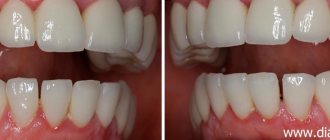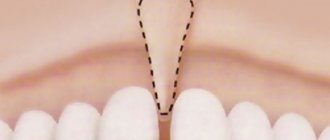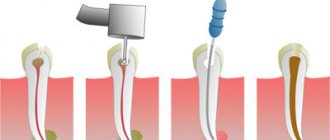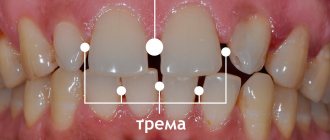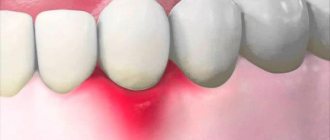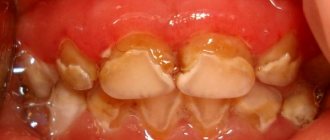Diastema is an empty space between teeth, ranging in size from one to five to six millimeters. A characteristic gap forms between the front incisors. Moreover, in some its appearance is due to heredity, in others - anomalies in the structure of the dental system.
The reason may be incorrect position of the teeth, pathologies in the structure of the frenulum, partial edentia, for example, the absence of lateral incisors or microdentia - the small size of dental crowns. Sometimes diastema is provoked by bad habits - biting pencils, pens and nails, as well as sucking a pacifier for a long time in childhood.
What is the correct name for the gap between the front teeth?
What we call a gap, in the language of dentists, sounds like a diastema (diastema - translated from Greek - interval, distance).
To one degree or another, diastema occurs in almost every fifth adult on the planet, and in every second child with baby teeth. Diastema is an abnormally large gap between the central upper or lower incisors of the dentition. Its dimensions can vary from 1 to 10 mm. But most often there are clefts ranging from 2 to 6 mm. Do not confuse a diastema with a trema, which forms anywhere in the dentition, excluding the central incisors.
Important! The gap between the front teeth in adults and children requires a preventive examination by a dentist. If the pathological process increases, a specialist may recommend removing the gap.
Important! During a dental examination, a specialist examines and classifies the diastema. Based on the complexity of the problem, the patient will be offered the most effective method of eliminating it.
Use of artistic restoration
Some patients are advised to undergo aesthetic artistic dental restoration to eliminate diastema. This is a therapeutic intervention during which composite microprostheses (veneers) are installed on the two central incisors, between which there is a gap. The doctor uses a filling material that matches the patient’s natural enamel shade and builds up additional volume of hard tissue on the two central front teeth. To undergo this procedure, you only need to visit the clinic once.
When restoring a tooth, the doctor restores its shape and function. The presence of colored deposits and cracks in the enamel, and other signs of destruction of dental tissue does not play any role, since most of the visible dental tissue is removed. Then its natural shape, color and functional properties are formed using composite materials (build-up method). If the root of a tooth is damaged, it is treated first, and restoration is carried out only at the next stage. If no pathologies associated with the tooth root are detected, then in 5-6 hours a qualified doctor is able to restore at least 4-5 teeth. However, if the dentist first works with the root of the tooth, then further manipulations are carried out after at least two days.
An important advantage of artistic restoration is its complete painlessness. Another important advantage of this method is its safety, therefore it has a minimal list of contraindications. Dental restoration can be performed on women even during pregnancy.
Types of diastemas
When faced with the problem of a gap between the front teeth, one should distinguish between false and true diastema.
- False – occurs in children with baby teeth. After they change and as the bite forms, it can go away on its own.
- True - diastema formed after the replacement of baby teeth and the formation of a bite, i.e. in adulthood. On its own, a visible gap between the teeth of an adult will not go away and needs treatment.
According to its structure, the cleft can be of two types.
- Symmetrical - a phenomenon in which the incisors change their location symmetrically with respect to each other and the conditional center of the dentition.
- Asymmetrical – a defect in which one of the front teeth retains its natural position, while the second deviates to the side, thereby forming a gap.
And taking into account the direction of the vertical axis of the anterior incisors, the classification of diastemas will be as follows.
- Lateral deviation of the crowns, in which the roots are parallel, and the incisors themselves diverge from each other, forming a gap.
- Body lateral displacement - the front teeth change their location along with the root.
- The medial inclination of the central incisor crowns is the most complex type of diastrema, in which the roots and teeth are subject to displacement. Incisors can grow to the side or rotate around their axis.
Why is an unclosed diastema dangerous?
The large distance between the teeth cannot be ignored. You need to visit an orthodontist, who will tell you what caused the pathology and whether it needs correction. At ORTHODONT CENTER clinics, the first consultation is free. If the doctor suspects serious changes in the structure of the jaws, he will conduct a detailed examination using X-ray equipment or a CT scanner.
If the situation is unfavorable, the specialist will offer various types of correction that can remove the cleft and at the same time eliminate the problems associated with it. Untreated diastema can lead to gum disease, the formation of “pockets” in the periosteum, and premature tooth loss. Due to the diastema, incorrect pronunciation of hissing and whistling sounds may occur.
Ways to correct gaps between teeth
Diastema correction is a jewelry process whose main goal is to achieve the most even and perfect alignment of the central incisors. Depending on the complexity of the problem and the age of the patient, it may take 1 – 2 procedures or last for several years. The following methods of correcting the defect are recognized as the most effective and popular.
1. Braces
To close the gap, the patient may be offered to wear braces - a non-removable orthodontic structure that allows you to straighten the dentition and give the correct position to the incisors. It is attached to the outside or inside of the teeth and can be completely invisible. Braces show the greatest effectiveness at the age of 16 years, while the bone tissue of the jaw is not yet fully formed. Wearing braces for adult patients is often unjustified, since after the orthodontic system is removed, the incisors may gradually return to their original position and form a gap again. The average cost of treatment is 50,000 rubles (prices are current for 2018).
Advantages of braces systems
- Safely.
- Effective.
Flaws
- Duration of wearing can reach 3 years.
- More careful and thorough oral care is needed.
- Do not remove until the end of treatment.
2. Records
A removable orthopedic structure, the operating principle of which is similar to braces. The plate, equipped with “hand-shaped processes,” pushes the problematic incisors in the right direction and gradually they take the correct position. It is most advisable to use plastic surgery at an early age - up to 12 years, while the bone tissue of the jaw and the position of the teeth are well amenable to correction. The average cost of treatment is 30,000 rubles (prices are current for 2022).
Advantages
- Safely.
- Effective.
- You can shoot.
Flaws
- Suitable only for correcting minor defects.
3. Mouth guards
Removable aligners are orthodontic structures that are a kind of “covers” that are put on the teeth. Manufactured using 3D technology, they apply the necessary pressure to problematic incisors, thereby moving them in the desired direction. By successively replacing the mouth guards in size, from larger to smaller, the gap is eliminated. The average cost is 150,000 rubles (prices are current for 2022).
Advantages
- Safely.
- Effective.
- You can shoot.
- Transparent aligners are invisible on the teeth.
Flaws
- Cost of treatment.
4. Veneers
Veneers are microprostheses that act as a kind of facing material for the outer surface of problem teeth. Their installation allows you to close the gap, in the literal sense of the word. Made from modern, reliable materials, they do not cause allergies and are completely invisible on the dentition. The average cost of closing a diastema is 30,000 rubles (prices are current for 2022).
Advantages
- Safely.
- Effective.
- Large selection of materials and colors of veneers.
- Quick visible results.
Flaws
- Pre-grinding of the incisors is required.
- After about 10 years, the veneer will wear out and will need to be replaced.
- There are contraindications - bruxism, increased tooth wear. An extreme lifestyle is also a limitation.
5. Lumineers
Lumineers are an orthopedic overlay, somewhat similar to veneers. Like them, lumineers are installed on the outer surface of the central incisors and completely cover the diastema. In terms of aesthetics, they are superior to veneers and allow you to get a sparkling Hollywood smile. The average cost of installation is 30,000 rubles (prices are current for 2022).
Advantages
- Safely.
- Effective.
- Quick visible results.
- No pre-grinding is required.
- Average service life is 20 years.
Flaws
- There are contraindications - bruxism, increased tooth wear, extreme lifestyle.
6. Crowns
Crowns are permanent orthopedic structures that completely cover the incisor, allowing the gap to be closed. They can be made of plastic, ceramics, metal or combined materials. The average cost of 1 crown is 20,000 rubles (prices are current for 2022).
Advantages
- Safely.
- Effective.
- Large selection of materials.
- Quick visible results.
- Invisible on the dentition.
- Can be installed on damaged teeth (up to 60% destruction is allowed).
- Average service life is 10 – 20 years.
Flaws
- Pre-grinding of the tooth is required.
7. Implants
Implants are non-removable orthopedic structures designed to replace missing teeth that have caused the formation of a diastema. An implant embedded in the osseous tissue of the jaw replaces the roots of the tooth, allowing you to completely restore the functionality and aesthetics of the crown of the problematic incisor. The average cost of prosthetics is 40,000 rubles (prices are current for 2018).
Advantages
- Safely.
- Effective.
- Large selection of materials.
- Quick visible results.
- Lifetime service life.
Flaws
- Postoperative observation is required.
- There are contraindications.
8. Cosmetic correction
This method is effective for minor diastemas. In this case, the dentist simply places a small filling in the space between the incisors, thereby visually eliminating the problem. The average cost of closing a diastema is 3,000 rubles (prices are current for 2018).
Advantages
- Safely.
- Effective.
- Quick visible results.
- No contraindications.
Flaws
- Over time, the filling may change its color, disrupting the aesthetics of the dentition.
- Average service life is 5 – 7 years.
- It is necessary to control (reduce) the load on the front teeth at the moment of biting.
- Risk of developing caries at the junction of the incisors.
9. Artistic restoration
Unlike cosmetic correction, artistic restoration is more durable. During the restoration process, the dentist builds up the tissue of the front teeth using layer-by-layer application of composite materials. Hardening under the influence of an ultraviolet lamp, they look natural, like part of a tooth, and create the effect of a tight closure of the incisors. The average cost of such aesthetic camouflage of a defect is 12,000 rubles (prices are current for 2022).
Advantages
- Safely.
- Effective.
- Quick visible effect.
- The buildup is invisible on the surface of the tooth.
- No contraindications.
Flaws
- It is necessary to control (reduce) the load on the front teeth at the moment of biting.
10. Surgical plastic surgery
Surgery is necessary when the diastema is formed due to improper position of the labial frenulum. A low-attached frenulum simply will not allow the incisors to close, and they will form a gap. To eliminate a congenital defect, specialists perform frenuloplasty - the distance between the front teeth is reduced naturally and they take the correct position. After plastic surgery, you may need to wear orthodontic appliances. The average cost of the operation is 7,000 rubles (prices are current for 2022).
Advantages
- Safely.
- Painless.
- Effective.
Flaws
- The duration of elimination of diastema may take several years.
advantages
Important! The sooner the incorrect location of the frenulum is detected, the easier it is to correct the defect. The ideal age for this is 5–8 years. The frenuloplasty performed during this period promotes independent closure of the incisors, without wearing orthopedic structures. At an older age, and even more so in adult patients, the teeth will need help - the incisors must be guided and brought together using braces, plates or aligners.
Before and After: treating diastema with aligners
We proceed from the fact that a diastema is a disproportionately large (compared to normal) gap separating two adjacent teeth that are more or less spaced apart. Aligners have the exceptional ability to predict all future treatment on a computer and see the final result BEFORE treatment begins. Diastema can generally be corrected perfectly without braces. The aligners cope with the task 100%. In this example, treatment of the diastema took 5 months. Look at the photo of the diastema BEFORE and AFTER treatment.
As we can see, there is no trace left of the diastema. And, besides, the treatment of diastema with aligners went completely unnoticed by others.
Star Smile aligners are especially effective for:
- cases of diastema with positive dentoalveolar discrepancy up to 6 (!) mm.
- when diastemas are present in the anterior region: incisor-canine, especially when the teeth are tilted forward (positive torque) and correction will be made by tilting backwards (loss of torque).
- cases with small diastemas in the molar area, for example, residual spaces after decementation of the edges during orthodontic treatment with fixed appliances
- gaps formed by relapses of orthodontic treatment with extraction with re-opening of diastemas at the level of the extraction gaps
Cost of treating diastema with aligners
The Star Smile company constantly monitors prices for orthodontic treatment in Russia, and we can say that today Star Smile has the lowest prices in Russia for aligner treatment compared to all other aligner manufacturers! (Invisalign, Orthosnap, 3D Smile) The total cost of treating diastema with Star Smile aligners, depending on the size of the interdental gap, can range from 80 to 130 thousand rubles
. If the price suits you, you can fill out the application form at the bottom of the site and we will make an appointment with a doctor in your city. Star Smile aligners are used by orthodontists in more than 70 cities of Russia. Since we work in all federal districts, large and medium-sized cities of Russia and interact with many clinics and orthodontists, we offer you the opportunity to undergo a free consultation with high-quality orthodontists in your city, where you can discuss the problem of diastema and determine the optimal solution for you . To do this, you need to fill out the form below, a Star Smile medical specialist will contact you and help you by scheduling a consultation at a convenient time or providing your doctor’s contact information.
Don’t put off the problem of your diastema “for later”!
Also, now it is possible to correct the diastema in installments, at the following cost:
- for the simplest case of diastema correction using aligners from 4,000 rubles
per month - in the most difficult case of teeth straightening with aligners - less than 10,000 rubles
per month
PS Regarding the cost of treatment with aligners:
the Star Smile company has made prices for aligners affordable for the vast majority of patients in Russia.
Cost of treatment in our clinic
The cost of eliminating the gap between the front teeth is determined based on the following factors.
- Complexity of the problem.
- Elimination method.
- Cost of consumables and medications.
In this table you can see the approximate prices of various methods of correcting a defect.
| Remedy | Prices |
| Braces | From 16,000 rubles |
| Records | From 20,000 rubles |
| Mouth guards | From 130,000 rubles |
| Surgical plastic surgery | From 5000 rubles |
| Veneers | From 20,000 rubles |
| Lumineers | From 20,000 rubles |
| Crowns | From 18,000 rubles |
| Implants | From 30,000 rubles |
| Cosmetic correction | From 2000 rubles |
| Artistic restoration | From 10,000 rubles |
All problems can be solved
An even dentition, white teeth of regular shape adorn any person and serve as an integral part of an ideal smile. Thanks to this, everyone can feel attractive, because in the modern world almost any dental defect can be successfully corrected. Thanks to this, many patients are able to return to normal life. Therefore, if you are concerned about the presence of a diastema, this imperfection can be corrected quite quickly and painlessly in dentistry near the Krasnye Vorota, Baumanskaya, Novokuznetskaya and Tretyakovskaya metro stations. Do not be indifferent to your health and psychological state, and confidently contact dental specialists to solve your problems.
Is it possible to remove a hole between teeth at home?
No! You cannot get rid of the gap between your front teeth on your own, with the help of folk remedies, spells and other “miraculous” techniques. The exception is false diastema, which disappears on its own as the child grows older.
Important! You should not tie the front teeth with a tight thread, trying to force them closer to each other. In childhood, this will cause improper formation of the jaw and unnatural position of the teeth. In adult patients, this leads to loose teeth. In patients of all age groups, this method of eliminating diastema can lead to the development of caries and periodontitis.
Important! If you encounter one or more causes of a gap, you should immediately consult a dentist.
Preventive actions
As you know, preventing the onset of a disease is always easier and cheaper than treatment. To prevent the appearance of gaps between teeth, you must follow basic rules:
- control the habit of chewing hard objects (for example, seeds, nuts, crackers, threads, wire, etc.);
- carry out proper hygienic care of the oral cavity (to maintain the health of the gums and prevent the spread of bacteria, it is very important to brush your teeth correctly, carefully brushing not only the chewing units, but also the canines and incisors);
- Conduct timely examinations with a dentist (this allows you to diagnose any deviation in time and begin treatment at an early stage).
If the cause of the appearance of interdental gaps is a genetic predisposition, it is very important to begin correction as early as possible. Maximum effectiveness is possible during the period when the teeth are still mobile in the gums and can be rebuilt.
Now you know exactly how to remove the gap between your front teeth, what methods are used for this and how long it takes to eliminate the defect. All that remains is to consult with an orthodontist and, after examination and research, choose a method for eliminating the diastema that is right for you.
Why does a gap appear between the front teeth?
The formation of diastema is influenced by a number of negative internal and external factors. The most likely reasons for the appearance of a gap are:
- Genetic (hereditary) predisposition.
- Too pronounced interdental papillae.
- Incorrect position of the lip frenulum.
- Late change of primary teeth.
- Slow growth and formation of central incisors.
- Partial or complete absence of teeth as a result of abnormal formation of the dental system.
- Pathological arrangement of teeth.
- Gum pathologies.
- Presence of supernumerary teeth.
- Microdentia – the patient’s teeth are small in size.
- Bad habits – chewing, sucking, etc.
- Injuries to the front teeth.
Why and how do diastemas form?
Gaps between teeth are an absolute norm for children when the jaws are actively growing and baby teeth, at a certain stage, no longer occupy all the space in the dentition. As teeth change, the gaps close, since the size of permanent teeth is larger than baby teeth, and the number of permanent teeth increases along with the continued growth of the bones of the facial part of the skull.
The main reason for the formation of diastema in adolescents and adults, not to mention genetic characteristics, is a short frenulum of the upper lip. If the frenulum is not attached correctly and is not long enough, the gap between the upper front teeth cannot close on its own. There are three frenulums in the oral cavity:
- frenulum of the tongue;
- frenulum of the upper lip;
- frenulum of the lower lip.
All these formations are strands of connective tissue, covered on the outside with a mucous membrane. The frenulum of the upper lip goes towards the gum and is riveted at the level of the alveolar process above the location of the necks of the teeth. Its lower attachment at the level of the crowns of the teeth disrupts the normal formation of the anterior part of the upper jaw and determines the existence of a gap. The cord can pass between the crowns of the teeth. In this case, the gap will be especially noticeable due to its significant size.
In addition to the frenulum, the formation of a diastema can be caused by supernumerary teeth. In this regard, a dental examination must necessarily include an x-ray.
How to prevent a gap in a child?
Caring parents should adopt a few simple rules that will help avoid the formation of diastema.
- Regular examination by the dentist, which is especially important if the child is genetically predisposed to the appearance of a gap - every 6 months.
- Strict adherence to the rules of oral hygiene.
- Providing adequate nutrition for the child with foods high in calcium, magnesium, fluorine, phosphorus, vitamins D, C, A.
- Try to stop your child’s bad habits - sucking objects, fingers, chewing pencils, seeds, nuts, etc. with his front teeth.
Important! An earlier visit to the dentist allows you to avoid the final formation of a diastema and will help eliminate any defects in the dentition.
Conclusions. Expert advice
A gap or gap between the front teeth is called a diastema. This is a malocclusion that occurs for various reasons: genetics, early change of teeth, anomaly in the shape or size of the incisors, etc. There are false and true diastemas: the first appears in children and is “outgrown”, the second is permanent and requires treatment.
It is possible to get rid of the gap between teeth, but all methods require a visit to the orthodontist, and attempts to correct the problem using traditional methods are simply dangerous. To correct the dentition, braces, plates, mouth guards, and surgical methods are used. You can also make cosmetic corrections: install veneers and lumineers, close the gap with a filling, or extend incisors.
It is not necessary to correct the diastema if it is small and the doctor considers it safe. A small cleft is a cosmetic defect. If the gap is large, it causes caries, eating problems, curvature of the jaw bone, etc. The development of diastema can only be prevented through regular visits to the doctor.
Consequences
Whether to correct a diastema or not is a personal matter for each patient. But it is necessary to understand that its existence may have a number of undesirable consequences and complications.
- Violation of the aesthetics of the dentition.
- Formation of malocclusion.
- Impaired diction.
- Development of caries and periodontitis.
Not to mention the fact that a gaping gap between the front teeth can cause psycho-emotional experiences for its owner and cause the formation of serious complexes.
Important! Over time, even a minor diastema can increase in size, which will require its correction and treatment.
Prevention methods
Not a single folk method can eliminate a chip. Moreover, exposure to teeth without professional supervision can be harmful to health. The most common method of correction among people who practice traditional recipes is tying the front teeth with a tight thread. This approach has a detrimental effect on the condition of the dentition; it is especially harmful for children, since their incisors may become deformed. In addition, this provokes the development of caries and periodontitis.
But you can prevent the appearance of diastema in children on your own. Parents should pay attention to the following recommendations:
- It is necessary to visit the dentist regularly and ask him to conduct a diagnosis. The doctor will be able to find out whether the child has a hereditary predisposition or other factors that may cause a gap to appear between the incisors.
- It is important to carefully monitor the hygiene process and remind the child of the need to care for their teeth.
- Monitor your child’s nutrition, add to the diet foods high in calcium, magnesium, fluorine, phosphorus, as well as vitamins D, C, A.
- Wean children away from bad habits (thumb sucking or other objects, chewing solid food with the front incisors).
It is important to remember that diastema is not always an aesthetic defect and requires correction. Sometimes this feature looks attractive and unusual, an example of this is famous actresses and models with a gap between their teeth. If there is excessive space in the dentition and medical indications, it is always possible to eliminate the diastema. To do this, you need to contact a specialist who will select the most suitable correction method.
